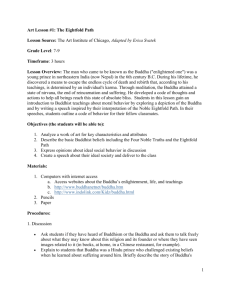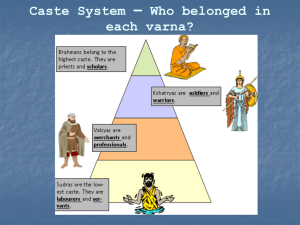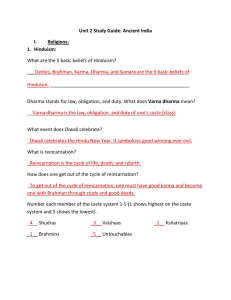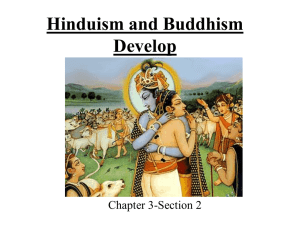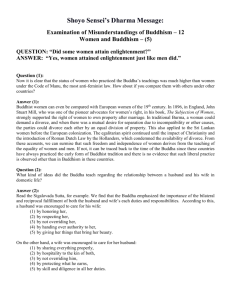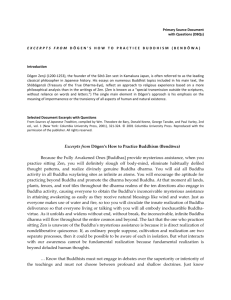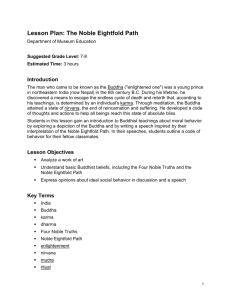Teachings of the Buddha
advertisement
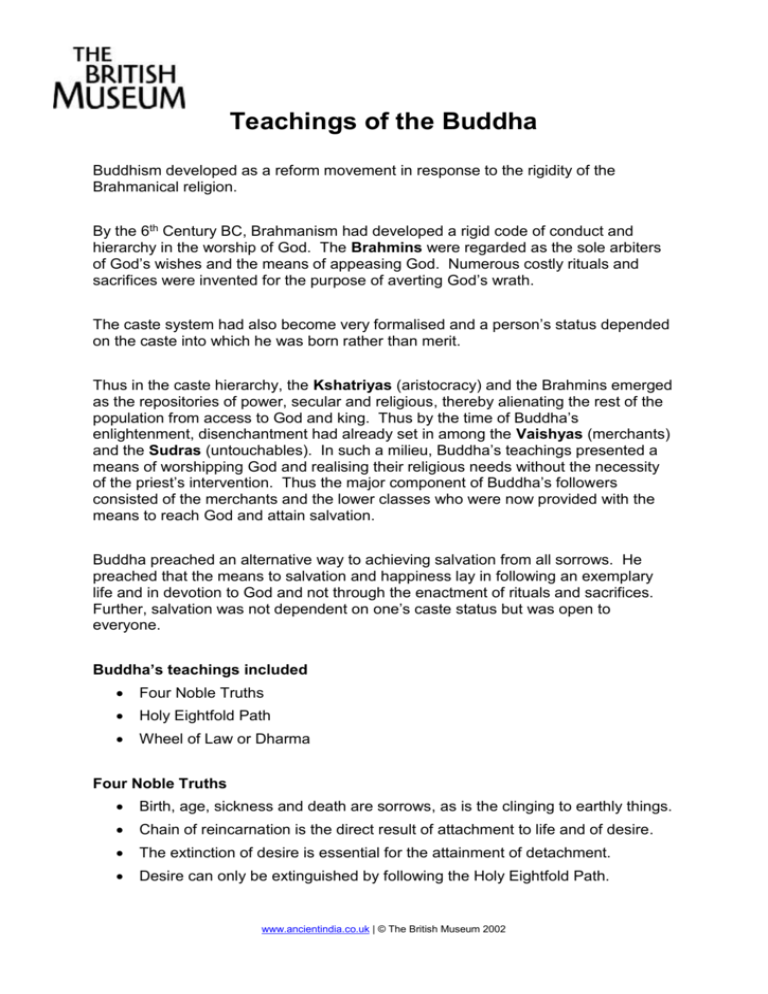
Teachings of the Buddha Buddhism developed as a reform movement in response to the rigidity of the Brahmanical religion. By the 6th Century BC, Brahmanism had developed a rigid code of conduct and hierarchy in the worship of God. The Brahmins were regarded as the sole arbiters of God’s wishes and the means of appeasing God. Numerous costly rituals and sacrifices were invented for the purpose of averting God’s wrath. The caste system had also become very formalised and a person’s status depended on the caste into which he was born rather than merit. Thus in the caste hierarchy, the Kshatriyas (aristocracy) and the Brahmins emerged as the repositories of power, secular and religious, thereby alienating the rest of the population from access to God and king. Thus by the time of Buddha’s enlightenment, disenchantment had already set in among the Vaishyas (merchants) and the Sudras (untouchables). In such a milieu, Buddha’s teachings presented a means of worshipping God and realising their religious needs without the necessity of the priest’s intervention. Thus the major component of Buddha’s followers consisted of the merchants and the lower classes who were now provided with the means to reach God and attain salvation. Buddha preached an alternative way to achieving salvation from all sorrows. He preached that the means to salvation and happiness lay in following an exemplary life and in devotion to God and not through the enactment of rituals and sacrifices. Further, salvation was not dependent on one’s caste status but was open to everyone. Buddha’s teachings included Four Noble Truths Holy Eightfold Path Wheel of Law or Dharma Four Noble Truths Birth, age, sickness and death are sorrows, as is the clinging to earthly things. Chain of reincarnation is the direct result of attachment to life and of desire. The extinction of desire is essential for the attainment of detachment. Desire can only be extinguished by following the Holy Eightfold Path. www.ancientindia.co.uk | © The British Museum 2002 Holy Eightfold Path The principles are Right Understanding Right Intention Right Speech Right Action Right Livelihood Right Effort Right Awareness Right Concentration Following the Eightfold Path will lead to Nirvana or salvation from the cycle of rebirth. Buddha’s first sermon was delivered in the Deer Park at Sarnath where he preached the Dharma or the Wheel Of Law. Buddha travelled around northern India preaching sermons and teaching his Middle Way to a growing number of disciples for 45 years. + www.ancientindia.co.uk | © The British Museum 2002



